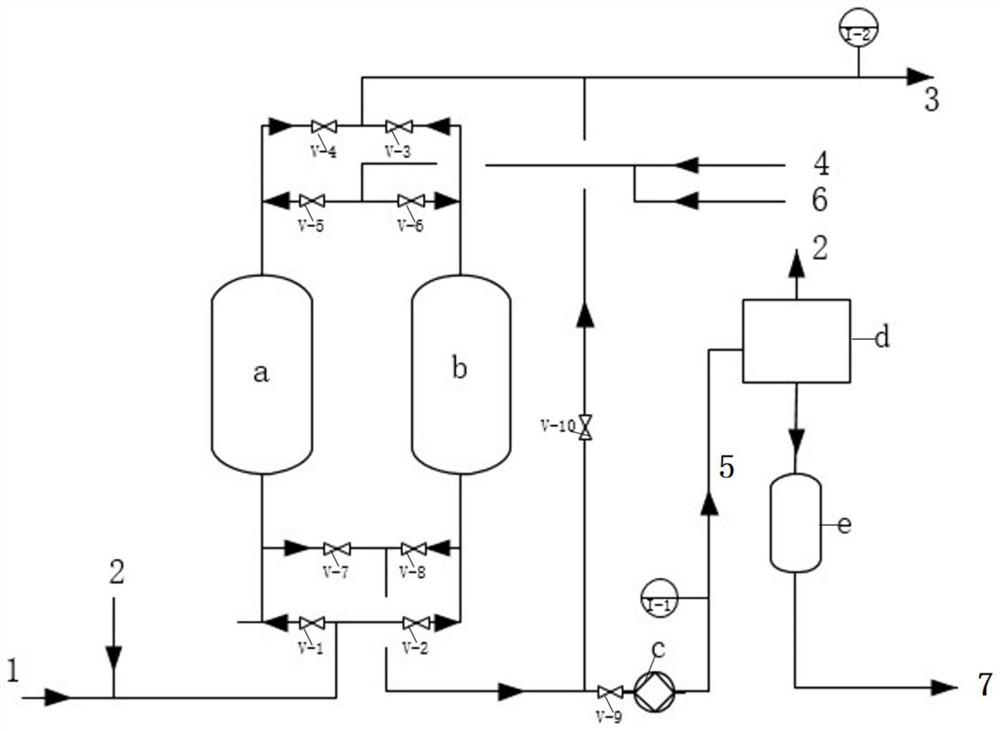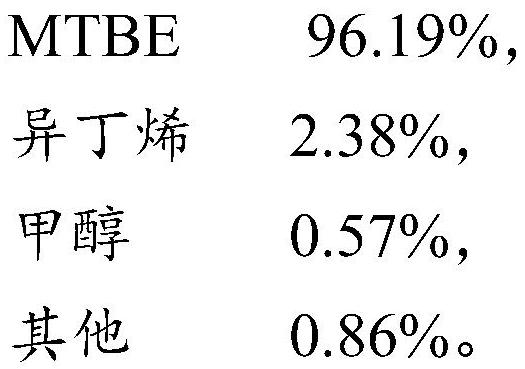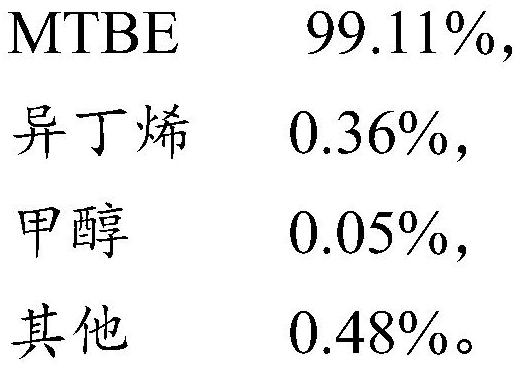Method for recovering waste gas containing methyl tert-butyl ether
A technology for recovery of methyl tert-butyl ether and exhaust gas, which is applied in the direction of separation methods, chemical instruments and methods, and other chemical processes, and can solve problems such as failure to meet exhaust gas emission standards, lower MTBE recovery rate, and large amount of activated carbon. More mesopores, less MTBE decomposition, more basic sites
- Summary
- Abstract
- Description
- Claims
- Application Information
AI Technical Summary
Problems solved by technology
Method used
Image
Examples
preparation example 1
[0072] 1, the waste TDA tar that nitrogen content is 26wt% and Wanol_C2020 polyether polyol are mixed uniformly according to the mass ratio of 1:1, then bake 20h at 300 ℃ in the blast oven; Put the carbide into the ball mill to fully grind and pulverize;
[0073] II. Mix the pulverized carbide and caustic soda (purity ≥ 99%) according to the mass ratio of 1:1 and fully grind them in a ball mill; The heating rate of min is heated to 700°C, and the mixture is obtained after being roasted at a heat preservation rate of 2 hours, and then naturally cooled to room temperature;
[0074]III. After the mixture is fully ground until there is no graininess, soak it in an aqueous hydrochloric acid solution with a concentration of 1mol / L for 4 hours, then wash the sample with a high-speed centrifuge and deionized water until the solution is neutral, and finally put it in a drying box. Dry at a temperature of 70°C for 8 hours to obtain a black powder, and then use waste TDA tar as a binder...
preparation example 2
[0076] 1, the waste TDA tar that nitrogen content is 26wt% and Wanol_C2020 polyether polyol are mixed uniformly according to the mass ratio of 1:3 first, then bake 20h at 300 ℃ in blast oven; Put the carbide into the ball mill to fully grind and pulverize;
[0077] II. Mix the pulverized carbide and caustic soda (purity ≥ 99%) according to the mass ratio of 1:1 and fully grind them in a ball mill; The heating rate of min is heated to 700°C, and the mixture is obtained after being roasted at a heat preservation rate of 2 hours, and then naturally cooled to room temperature;
[0078] III. After the mixture is fully ground until there is no graininess, soak it in an aqueous hydrochloric acid solution with a concentration of 1mol / L for 4 hours, then wash the sample with a high-speed centrifuge and deionized water until the solution is neutral, and finally put it in a drying box. Dry at a temperature of 70°C for 8 hours, then use the waste TDA tar as a binder to bind the powder, t...
preparation example 3
[0080] 1, the waste TDA tar that nitrogen content is 26wt% and Wanol_C2020 polyether polyol are mixed uniformly according to the mass ratio of 1:5 first, then bake 20h at 300 ℃ in blast oven; Put the carbide into the ball mill to fully grind and pulverize;
[0081] II. Mix the pulverized carbide and caustic soda (purity ≥ 99%) according to the mass ratio of 1:1 and fully grind them in a ball mill; The heating rate of min is heated to 700°C, and the mixture is obtained after being roasted at a heat preservation rate of 2 hours, and then naturally cooled to room temperature;
[0082] III. After the mixture is fully ground until there is no graininess, soak it in an aqueous hydrochloric acid solution with a concentration of 1mol / L for 4 hours, then wash the sample with a high-speed centrifuge and deionized water until the solution is neutral, and finally put it in a drying box. Dry at a temperature of 70°C for 8 hours, then use the waste TDA tar as a binder to bind the powder, t...
PUM
| Property | Measurement | Unit |
|---|---|---|
| Specific surface area | aaaaa | aaaaa |
| Specific surface area | aaaaa | aaaaa |
| Specific surface area | aaaaa | aaaaa |
Abstract
Description
Claims
Application Information
 Login to View More
Login to View More - R&D
- Intellectual Property
- Life Sciences
- Materials
- Tech Scout
- Unparalleled Data Quality
- Higher Quality Content
- 60% Fewer Hallucinations
Browse by: Latest US Patents, China's latest patents, Technical Efficacy Thesaurus, Application Domain, Technology Topic, Popular Technical Reports.
© 2025 PatSnap. All rights reserved.Legal|Privacy policy|Modern Slavery Act Transparency Statement|Sitemap|About US| Contact US: help@patsnap.com



